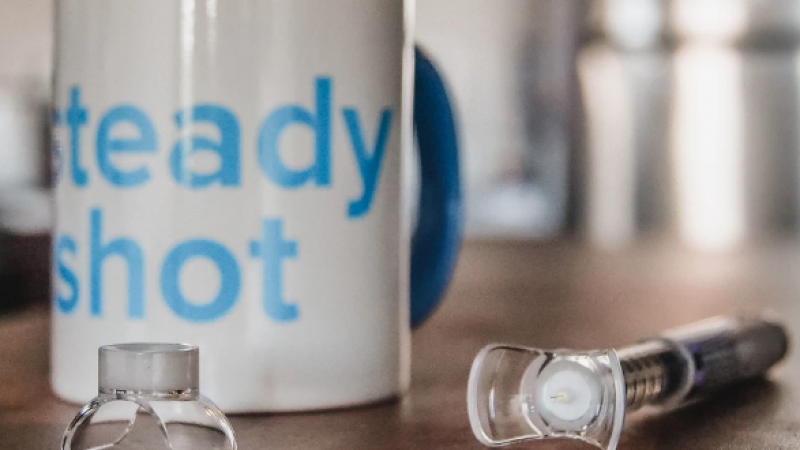Communication is critical in any healthy relationship, including the relationship between you and your body.
Think about how your body talks with you. Does it need energy? If it does, your stomach will grumble, begging you for food. Did your body overexert itself during a workout? You’ll feel fatigued and have lasting muscle soreness, warning you to take it easier next time.
Type 1 diabetics must be highly aware of their body’s signals to prevent catastrophic events. Steady Shot is a product designed to help people with diabetes check in with their bodies while maintaining their active lifestyles.
Human bodies are typically efficient at extracting nutrients and transporting the energy source for cells to use. However, people with Type 1 diabetes can create the energy source — glucose — but cannot transport it into cells, leaving an individual deprived of essential nutrients.
This is equivalent to pumping a car’s gas pedal, but having a fuel-line clog prevents it from getting to the engine. The “clog” is formed because Type 1 diabetes patients lack the protein insulin, which helps facilitate glucose out of the bloodstream and into energy-deprived cells.
Blood glucose levels vary throughout the day, so people with Type 1 diabetes must regularly check their body’s blood sugar levels and make appropriate adjustments. In addition, Type 1 diabetics are dependent on insulin injections to help regulate blood glucose levels.
Steady Shot founder and CEO Shawn Michels was a student attending UW-Madison when he recognized a problem with his own insulin injections. He designed a solution to help him and 7.4 million other insulin injectors safely rotate injections and be less prone to a specific side effect.
On average, people with Type 1 diabetes inject three to five insulin shots a day, which amounts to 1,100 to 1,800 injections per year. Insulin should be injected into fatty tissue so results aren’t immediate and don’t cause a drastic swing in blood sugar levels. Common sites for insulin injection sites include the abdomen, the top outer thigh, the upper outer space of the arms and the buttocks.
Michels found himself injecting insulin in his thighs and abdomen each day, as those sites were more accessible than others. Over time, he noticed pain and bruising in these areas.
The pain was caused by a buildup of fat accumulating under the skin, a condition called lipohypertrophy. About half of Type 1 diabetics have experienced lipohypertrophy, Michels said.
The cure to this ailment is rotating injection sites, but not all injection sites are easily accessible. Steady Shot was invented to fix that.
Steady Shot is a reusable plastic attachment to standard insulin pen needles. The device pinches the skin keeping the needle in place and allowing for removal of the needle with little to no pain.
“There is nothing like it, and too many people can’t easily rotate to all the doctor recommended injection sites while using either the dominant or non-dominant hand,” Michels said.
Users of the Steady Shot device tell Michels they are confident injecting at new sites and the device’s ability to allow overused injection sites time to heal. Steady Shot is accommodating to a busy lifestyle, allowing customers to discreetly inject in a public setting or traveling in a car.
About 20 percent of daily injectors experience needle-anxiety phobia. Steady Shot can help these people complete injections comfortably as the attachment is less intimidating than a “naked needle.”
Michels introduced Steady Shot to the market in January 2020 and has grown the company in the face of the COVID-19 pandemic. Steady Shot sells to customers directly and has moved business-to-business sales online.
Steady Shot hopes to bring on a sales staff and expand to brick-and-mortar pharmacies and other pharmacological distributors. Michels hopes its performance in the Wisconsin Governor’s Business Plan Contest will bring the company publicity, mentorship, connections and potential funding. Michels also hopes to add a new product to the company’s list within a few years.
– By Reagan Stultz. Stultz is a graduating senior in the UW-Madison Department of Life Sciences Communication.




